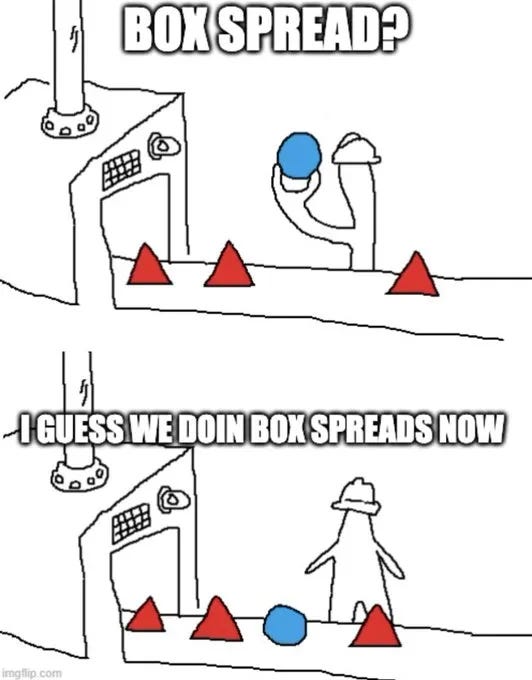$1 trillion box-spread AUM is up for grabs
Borrowing may never by the same
Basis Northwest is my 2026 taxable wealth conference. Sign up for more info on the landing page.
A box spread is a four-legged options trade. The intuition readers should have in mind is a zero-coupon bond.
Borrowers issue zero-coupon bonds to raise money. Investors buy zero-coupon bonds to make money by lending.
Investors can borrow via box spread, which means they execute four options trades at the same time, resulting in a net credit in their brokerage accounts.
At expiration, they owe more than they borrowed. For tax nerds, this amount is a capital loss.
The difference, compounded appropriately, is the time value of money, and the true risk free rate1.
“Btw box rates are what [market makers] use as their R in black scholes,” a well-known options trader told me in a chat on twitter.
The trades are generally centrally cleared and guaranteed by the Options Clearing Corporation (OCC), which is effectively credit risk-free2.
As for the box spread itself, “The risks associated [with borrowing via box spread] are very similar to the existing solutions such as margin and pledged-asset borrowing,” said Jeff Chang, president and co-founder of Vest, which manages around $55 billion in options-based ETF AUM, and also facilitates box-spread borrowing via Vest’s Synthetic Borrow product.
“Collateral calls,” an options technology executive told me, “are the biggest risk, but not net new.”
There's also interest rate risk, albeit relatively minor, when borrowers attempt to repay a box-spread loan early3.
For this complexity and risk, box-spread borrowers get two big perks (and several smaller ones4):
Credit-risk-free borrowing at interest rates close to the Treasury curve (i.e. no retail markup)
A handy capital loss that can offset capital gains (i.e. losses similar to those produced by tax-loss harvesting)
“Box spreads might be the ultimate ‘disintermediated’ borrowing mechanism out there,” Wes Gray, CEO of Alpha Architect and co-creator of BOXX ETF with Lawrence Lempert of Arin Risk Advisors, said to me on twitter.
The market provides liquidity, and a box spread is just one way to tap into it.
This might not seem like a big deal… but it is.
To show you why, next I’ll look at…
Borrowing demand
Lending supply
The ecosystem of vendors
What winning looks like


